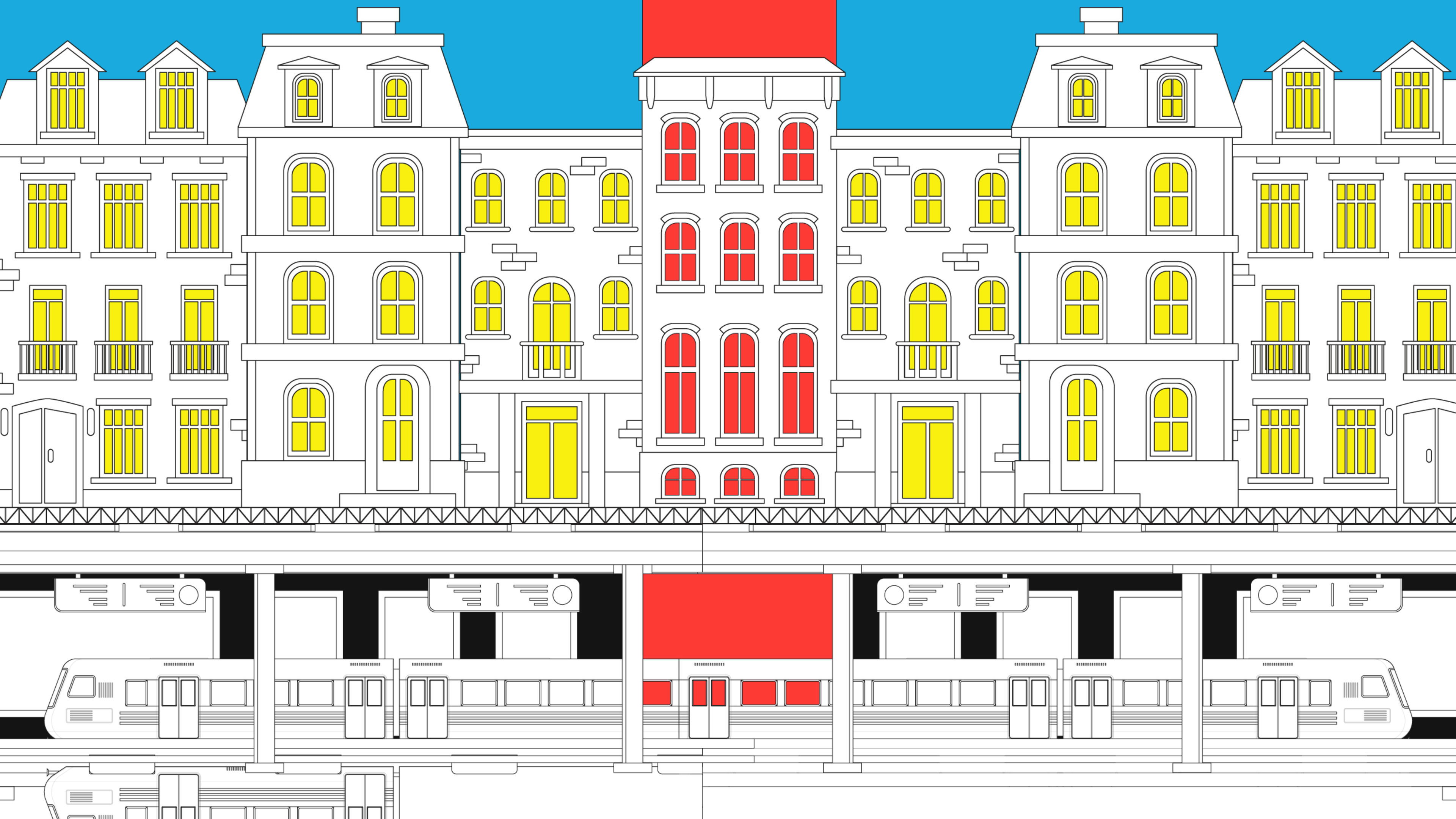There are beautiful pieces of civic infrastructure that feed the soul—from ancient ornate aqueducts to structurally expressive modern bridges. Generally speaking, though, most infrastructure doesn’t get this royal treatment. Rather than making an exhaust port or an electrical substation into a flamboyant display of modern engineering, we often do the next best thing: we hide them. The camouflaging of everything from oil derricks to cell phone towers can be so devious and varied, it can sometimes be difficult to distinguish between what’s real and what isn’t.
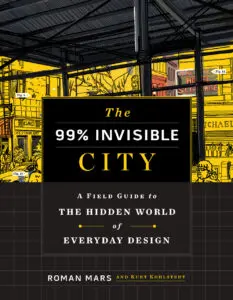
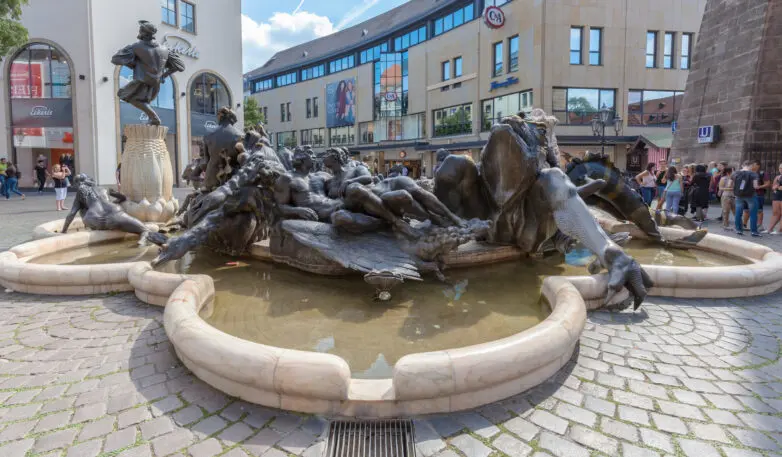
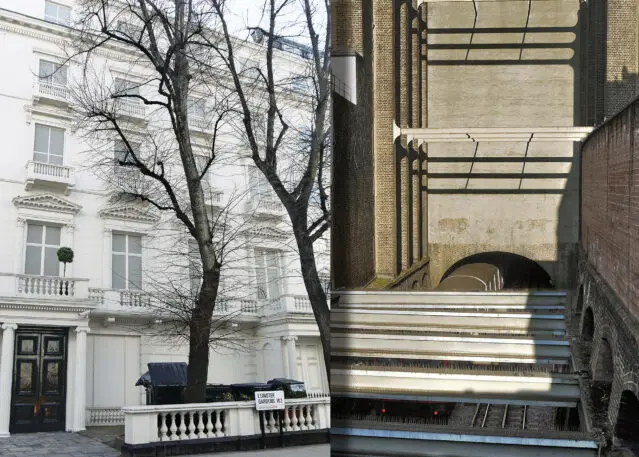
Passing by 58 Joralemon Street in Brooklyn, New York, it would be easy to dismiss the three-story brick structure as just another Greek Revival residence in a row of similar homes. It has many of the same features as its neighbors: its height and proportions are similar, and there is a staircase leading up to a distinctively framed front door. The longer one looks at the front, however, the more it becomes apparent that this is no ordinary building. The windows and the muntins, frames, and lintels around them are all jet black. This building is, in fact, a ventilation vector for the subway line running underneath it as well as an emergency egress point for passengers should something awful happen on the train below. In this case, the building is real, but it has been gutted and repurposed. Whether they are purpose-built or adapted, such structures present a fun puzzle, a site-specific mystery like a trompe l’oeil rendered in three dimensions.
In Toronto, meanwhile, there’s no single aesthetic feature that unites the buildings that both house and hide the city’s regional energy infrastructure. Walls, roofs, doors, windows, and landscaping help create the illusion that these are ordinary buildings, but there are telltale signs that there is more to the story.
Toronto Hydro was established in 1911, the same year that electrical power from the massive new generators at Niagara Falls first lit up the city’s downtown streets. New substations were needed to connect this natural powerhouse to people’s homes and convert raw energy into usable power for consumers along the way. Convincing citizens to accept ugly masses of metal and wire in their neighborhoods would have been a challenge, though, so a series of architects were hired to develop alternatives.
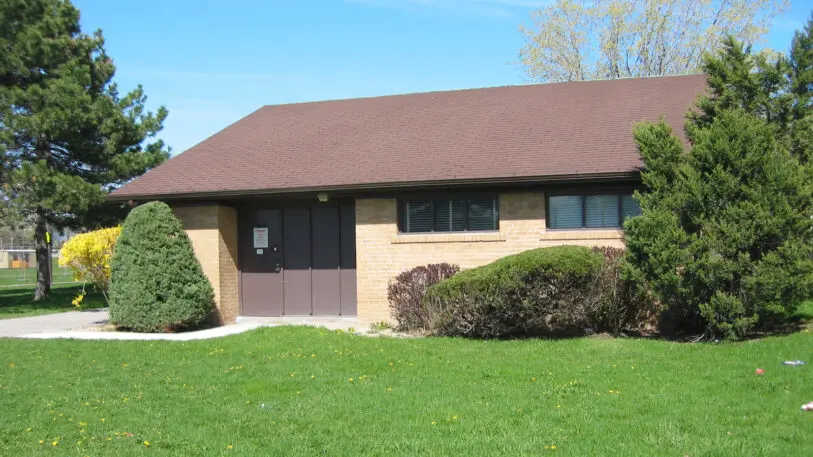
Most of these house-shaped substations were variations on a half-dozen base models designed to fit into different kinds of neighborhoods. Over the 20th century, Toronto constructed hundreds of these structures that spanned an aesthetic spectrum from ranch-style houses with asymmetrical rooflines supported by post-and-beam construction to faux-Georgian mansions with gabled roofs and triangular plinths above their doors.
Usually, “breakers and voltage dials are located in the main part of the house,” explains local journalist Chris Bateman, while “unsightly heavy equipment necessary for converting high voltage electricity to a current suitable for domestic consumption [is] usually in a brick building at the rear.” Inside, the utility of these buildings is obvious. They are packed with equipment and a smattering of chairs for visiting engineers. But even on the outside, there are subtler hints that these buildings are not what they appear to be.
Many of these residential-looking substations feature windows or doors that seem out of place or overly industrial for a house, while others feature landscaping that is often a little too perfectly designed and maintained. In some cases, neighborhoods have changed, and surrounding buildings have gotten bigger, dwarfing the cozy-looking little wood or brick substation structures and causing them to stand out more. Arrays of security cameras around their perimeters are also obvious clues, as are city or utility company vehicles parked in their driveways. There is also the more general and uncanny sense of déjà vu that builds up over time from seeing nearly identical fake houses over and over again in different locations.
Toronto Hydro has stopped adding new residential-looking substations and has even started tearing some down as new technology has made them obsolete and occasionally dangerous. One actually exploded in 2008, resulting in a fire and a local power outage, which, naturally, concerned citizens living next to similar structures. Area residents are likely to see fewer of these over time—or at least ones still housing infrastructure. In fact, some substations have since been repurposed and transformed into the very houses they were designed to imitate.
Excerpted from The 99% Invisible City: A Field Guide to the Hidden World of Everyday Design, by Roman Mars and Kurt Kohlstedt. Copyright © 2020 by Roman Mars. Used by permission of Houghton Mifflin Harcourt. All rights reserved.
Recognize your brand’s excellence by applying to this year’s Brands That Matter Awards before the early-rate deadline, May 3.
